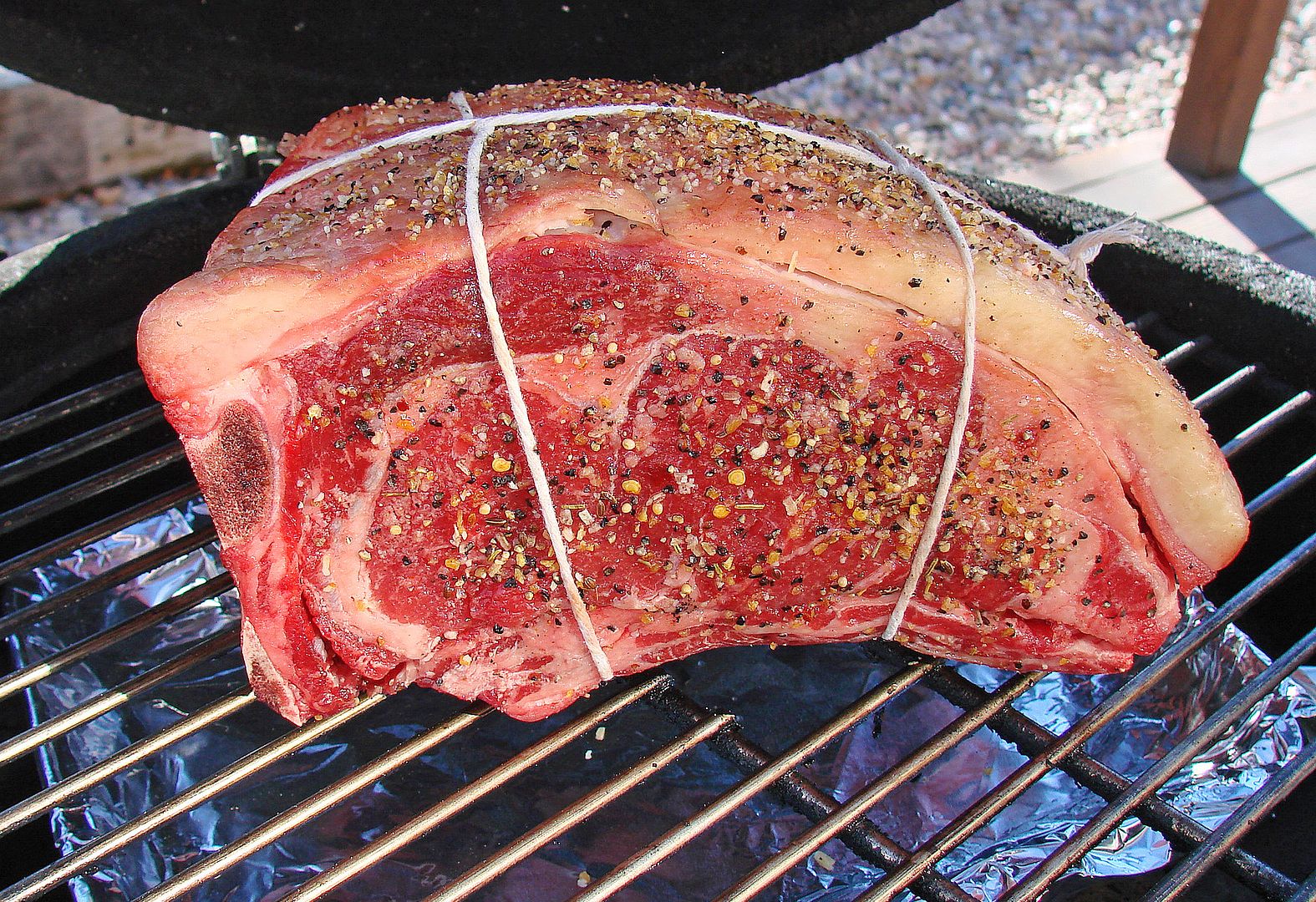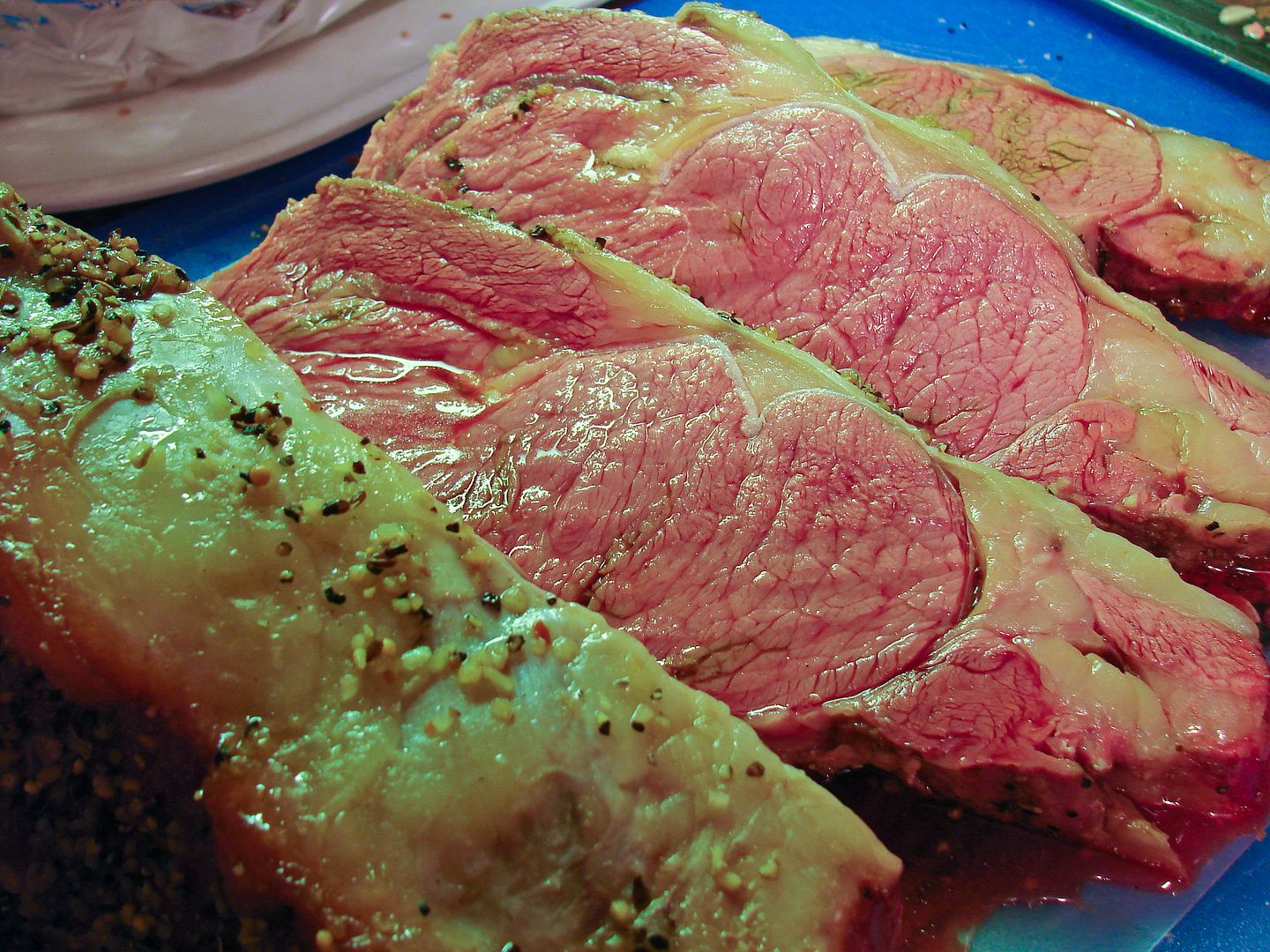Welcome to the EGGhead Forum - a great place to visit and packed with tips and EGGspert advice! You can also join the conversation and get more information and amazing kamado recipes by following Big Green Egg to Experience our World of Flavor™ at:
Want to see how the EGG is made? Click to Watch
Facebook | Twitter | Instagram | Pinterest | Youtube | Vimeo
Share your photos by tagging us and using the hashtag #BigGreenEgg.
Share your photos by tagging us and using the hashtag #BigGreenEgg.
Want to see how the EGG is made? Click to Watch
Carry over temp of Prime rib
Options
EGGARY
Posts: 1,222
I have seen pulling Prime Rib from 118 to 135. I like mine medium rare to rare and my wife likes it medium to medium rare. What is the best way to get the best of both worlds ?
Also, what is the carry over temp after pulling the Prime Rib off the EGG ?
Thanks !
Gary
Also, what is the carry over temp after pulling the Prime Rib off the EGG ?
Thanks !
Gary
Comments
-
I pull around 123-125F, liking rare, medium rare and have seen them creep up 5-7 degrees. Depends on size of roast
-
like this chart for normal roasting temps say 325 to350
make adjustmens frpm there, as in take notes, your idea of med/rare could be different from mine. bigger or smaller ones. temp your cooking at all play a part, even the roast, its a judgment call and you need to pay attenrion. after a while you wil figure it out :laugh:
http://www.reluctantgourmet.com/doneness_chart.htmfukahwee maineyou can lead a fish to water but you can not make him drink it -
I always pull earlier than what people post and what I read in recipes. Not sure why as my thermometers are calibrated. Anyway, I pulled mine at 118 and it got all the way to 131 before leveling out. Mine was cooking at 250 when I pulled it to get my temp up for the crust forming end sear. Other factors that will affect the temp carryover is the the size of the roast (larger will carryover more) and the temp at which you are cooking. You must factor that in when timing your pull. After overcooking stuff so much early on with my BGE, I know shoot for under temp and will put back on if necessary.Joe - I'm a reformed gasser-holic aka 4Runner Columbia, SC Wonderful BGE Resource Site: http://www.nakedwhiz.com/ceramicfaq.htm and http://www.nibblemethis.com/ and http://playingwithfireandsmoke.blogspot.com/2006/02/recipes.html
What am I drinking now? Woodford....neat -
Rouxbe Online Cooking School says the carry over rise in temp can range from 5-20f, depending on size of the roast and the temp at which it was roasted. Higher roast temps (350f) will have a higher rise after cooking.
My experience has shown more like 10 degrees.
I pulled mine yesterday at 114.9f at 6:15 pm. (cooked at 250f)
at 6:30 it was 124.9
at 6:45 it was 130.2
at 7:00 it was 132
at 7:45 it was 129Knoxville, TN
Nibble Me This -
Thank you for all the information. Especially the one with the Chart. I am going to print it and keep it in a safe place.
The Prime Rib I have is over 7lbs.. Ideal Temp to pull ? I will be cooking at 250 Dome temp, give or take a degree or two..
Gary
Stay warm. -
I did an 11lb bone in roast yesterday, pulled cooked it at 250, pulled at 115 it carried over to about 128 in the span of an hour. I cranked the egg up to 500, threw it in for about 10-12 min to get a nice crust on it, and pulled it. It came out PERFECT.
-
After pulling it out, when you seared it was it still indirect & if so fat side up or down??
-
Like others mentioned, carryover can be affected by weight and shape of the roast, thickness of fat cap, whether it's bone-in or an eye of the rib roast, pit temp, and of course the internal temp you pull it.
Here is one I barbecued yesterday.... It's a 7# bone-in one that did have a nice fat cap, I used a 260° (average pit temp), and took several internal readings before pulling it off the cooker.
The temp I measured in the eye was 118°-120°, and the rest was about 15 minutes tented in foil. I call this medium rare as I know the final temp was 125°-130°. (I did inject warm au jus into it at 100° internal, but I don't think that had any bearing on the last 20° I let 'er cook.) Happy Trails~thirdeye~Barbecue is not rocket surgery
Happy Trails~thirdeye~Barbecue is not rocket surgery -
I did a 7.2 pound bone-in last Thursday at 250 grate temp indirect for a little less than 4 hours. I pulled it off at 130 degrees and after 15 minutes it had risen 4.5 degrees as measured by my Thermoworks MTC. Just goes to show how much the carryover can differ.
It might have risen a little more after the 15 minute mark but I wouldn't know. -
I did a 7.2 pound bone-in last Thursday at 250 grate temp indirect for a little less than 4 hours. I pulled it off at 130 degrees and after 15 minutes it had risen 4.5 degrees as measured by my Thermoworks MTC. Just goes to show how much the carryover can differ.
It might have risen a little more after the 15 minute mark but I wouldn't know. -
i did one for christmas dinner. fat cap very thin, but it was aged for just under 40 days/ at 250, it took almost three hours to flirt with 100 internally. i bumped to 325, then 400, and still took nearly five hours to hit 120 internal. any thoughts?ed egli avea del cul fatto trombetta -Dante
-
Let's see, did you happen to weigh it before and after aging? And did it happen to be boneless? And did you put it on the cooker when it was still cold?
At 40 days of additional aging (and by additional I mean the carcas most likely had at least 14 days of aging before cutting and packaging), I would expect between 7% and 10% of moisture loss.... moisture conducts heat. That's why brined things cook faster than non-brined things, so wouldn't a fresh roast cook faster than an aged one?
Bones conduct heat, so boneless roasts will often take a little more time to cook, than a bone-in one of the same diameter. Fat can act as an insulator, but in your case, the thin layer did not have an effect.
Couldn't help asking the obvious about the temp of the roast going onto the pit. Heheee.Happy Trails~thirdeye~Barbecue is not rocket surgery -
15% weight loss. but i have always found my aged steaks to cook far more quickly.
went on at about 45 internal. was only out on the counter maybe two hours.
[you know you just freaked out all the people who think their beef is "fresh" (as in "slaughtered yesterday") when you mentioned that it is typically aged a couple weeks to begin with? hahaha]ed egli avea del cul fatto trombetta -Dante -
hey Jeff, for the past year I have been hot tubbing my prime ribs with great results. Typically I go 75 to 90 minutes depending on the thickness.Re-gasketing America one yard at a time.
Categories
- All Categories
- 182.7K EggHead Forum
- 15.7K Forum List
- 459 EGGtoberfest
- 1.9K Forum Feedback
- 10.3K Off Topic
- 2.2K EGG Table Forum
- 1 Rules & Disclaimer
- 9K Cookbook
- 12 Valentines Day
- 91 Holiday Recipes
- 223 Appetizers
- 516 Baking
- 2.4K Beef
- 88 Desserts
- 163 Lamb
- 2.4K Pork
- 1.5K Poultry
- 30 Salads and Dressings
- 320 Sauces, Rubs, Marinades
- 543 Seafood
- 175 Sides
- 121 Soups, Stews, Chilis
- 35 Vegetarian
- 100 Vegetables
- 312 Health
- 292 Weight Loss Forum



